Twenty-five years ago, thousands of Methodist members and their friends from across Nigeria flocked to Orimerunmu village, Ibadan/Lagos Expressway, to be a part of this great move of God and to receive Resurrection impartation. They, like many in the early church in Acts (see Acts 2), sang with fervour, testified of God’s sanctifying power, waited on the Lord under a very challenging environment until they were baptised in the Holy Spirit and spoke in tongues.
Twenty-five years ago, Orimerunmu village was a virgin thick forest with surrounding villages full of idol spots. Rev Dr Kikelomo Adeyemi, the MEM leader, Folawiyo Memorial Methodist Church, Ikate, Surulere, explained how evangelical youth with their spiritual zeal, commitment and passion for revival prayerfully combed the entire Orimerunmu axis and villages. Beyond every physical and spiritual obstacle, the Holy Spirit opened the entire Orimerunmu for the Methodist Church of Nigeria, and the construction started in late 1999. Our immediate neighbour then, the Mountain of Fire and Miracle (MFM), took the Dozer a week before us, as we were doing the clearing of the Methodist Village campground, Orimerunmu, at the same time. For me, after 25 years, the comparison is a sad reflection looking at the state of Methodist Campground, Orimerunmu.
The 2000 Methodist Orimerunmu Revival serves as a powerful example of God’s work and a reminder of the missional potential for future revivals that can transform individuals, leaders, local churches, dioceses, communities, and the world as our parish. At the 2000 Methodist Orimerunmu Revival, the dross dissipated, and the gold emerged as living sacrifices (Rom 12:1). The hymn by Fanny Crosby set the atmosphere at the 2000 Methodist Orimerunmu Revival:
1. God is here, and that to bless us
With the Spirit’s quick’ning power;
See, the cloud already bending,
Waits to drop the grateful shower.
Refrain:
Let it come, O Lord, we pray Thee,
Let the shower of blessing fall;
We are waiting, we are waiting,
Oh, revive the hearts of all.
2.
God is here! we feel His presence
In this consecrated place;
But we need the soul refreshing
Of His free, unbounded grace. [Refrain]
3.
God is here! oh, then, believing,
Bring to Him our one desire,
That His love may now be kindled,
Till its flame each heart inspire. [Refrain]
4.
Savior, grant the prayer we offer,
While in simple faith we bow,
From the windows of Thy mercy
Pour us out a blessing now. [Refrain]
To celebrate the miracle of 2000 Evangelical Convention especially after 25 years of the Nigeria Methodist episcopacy, the Methodist Orimerunmu Revival is about envisioning the future revival and leadership. Sadly, we as a people have forgotten how to drink from the ancient well of the faith of our fathers. We have become preoccupied with the trappings of a modern world/church— shifting values, ethnicity, technology, godfatherism, social acceptance—and we have let the raw, undiluted presence of the Holy Spirit become overshadowed by programs, committees, and business models. Instead of tarrying at the altar, we rush to the following item on our schedule, and when nothing is there, we turn to the latest preoccupation. We have embraced mediocrity and hypocrisy in so many ways, most importantly spiritually. We have relegated God to the highest donors. We have lost the urgency for revival and the fervency of the anointing that once dripped from the upper rooms of prayer meetings to the streets where the lost were saved in droves. The following are signs of spiritual decline in modern churches: Prayerlessness, Formalism Over Fire; Division and Carnality; Lack of Miraculous Expectation; Anaemic Evangelism (replacing soul-winning fervour with social events).
The 2000 Methodist Orimerunmu Revival, an evangelical Methodist gathering, marked a shift from pulpits to people, where every member of the Church was a minister. This shift highlights that God can use anybody, regardless of class or religious pedigree, as a catalyst and inspiration for future revivals. Key aspects of the 2000 Methodist Orimerunmu Revival and its potential for the future revivals characterised by ‘The Power of His Resurrection,’ highlights the importance of overcoming sin, scriptural holiness, missional unity, passion for soul winning, and the power of the Holy Spirit (Phill 3:10). The Resurrection as the proof of our Lord’s mission remains our hope, justifying, and evidencing power as a church.
Today, we have an urgent need for revival; hence, we must take an honest stock of our spiritual and leadership condition and cry out for a fresh visitation. The 2000 Methodist Orimerunmu Revival is not about idolising a place or a set of people from the past but a need to encourage continuity and individual gifts. Revival history tells us that every genuine revival is unique, birthed in a specific context for a specific purpose. However, the 2000 Methodist Orimerunmu Revival, like other past revivals, teaches us timeless truths about how revival can erupt: Deep Hunger and Desperation; Unity in Jesus Christ; Emphasis on the Holy Spirit’s Full Manifestation; Repentance and Holiness; Witness and Missions. The 2000 Methodist Orimerunmu Revival warns that a revival that ‘remains confined to a single location is not sustainable; it must overflow into evangelism and global outreach.’ After 25 years, God want us to embrace the timeless truth about revival’s core principles and seek a fresh outpouring of the Holy Spirit in our time.
A spiritual hunger and thirst marked the 2000 Methodist Orimerunmu Revival for the Power of Jesus’ Resurrection, the triumph of life over death and good over evil. The 2000 Methodist Orimerunmu Revival was a demonstration of God’s ultimate power and a source of hope and strength for the Church, the believers, offering the promise of new life and guidance on overcoming sin. Orimerunmu Revival, through the teaching of the undiluted Word of God by His Eminence Dr Sunday Mbang, Archbishop Ayo Ladigbolu, Very Rev Dr Mike Oye, Bro. Gbile Akanni, late Rev Muhammed Ali, among others, were a validation of Jesus’ claims and teachings, confirming His identity as the Son of God. Orimerunmu Revival was about access to Resurrection Power and living in the Resurrection. There were some prophecies from the 2000 Methodist Orimerunmu Revival, regarding the Church’s future, especially Methodism. The increase in apostasy of the Church was predicted, as was the falling away of those who once believed. The request from Western churches to the Methodist Church Nigeria to send missionaries was predicted.
Methodism was a revival movement, a renewing manifestation of the glory of God in revival power with signs following. Revival is a time when God reveals Himself in awesome holiness and irresistible power. Revival in this context is not just an annual event by a congregation where a guest minister speaks, culminating in an altar call. Revival could also mean ‘a general social transformation that takes place over years, when a nation or community is awakened to the presence and power of God and changed by it. Methodism was undoubtedly involved in both senses of revival, hosting the first and being a significant catalyst for the second.’ The mission statement of Methodism was “to reform the nation, particularly the church, and spread scriptural holiness.” Methodism as a revival movement during the 2nd Great Awakening (1792-mid-1800) continued to ignite many churches, regardless of their affiliation, and contributed to their spark.
Prayer has always been at the heart of all revivals, especially the 2000 Methodist Orimerunmu revival. The renewing passage of prayer about revival is that of 2 Chron 7:14, “If my who are called by my name, will humble themselves and pray and seek my face and turn from their wicked ways, the will I hear from heaven and forgive their sin and will heal their land” is not ever true for us as it was for Israel, as all scripture through all generations is for the believer’s instruction! (2 Tim 3:16).
Spiritual revival is ultimately a work of God. The history of revival begins through repentance and a fresh baptism in the Holy Spirit. The study of the life of Israel in the Old Testament and the Church in the New Testament reminds us of times when the people were restored to their rightful place in their relationship with God. Revival, as a Christian writer expressed it, “is when God visits the world of men and women to impart a fresh vision of his power and grace, which simultaneously reveals our sinfulness, inadequacy and desperate need for his mercy. During times of revival God’s people are restored from backsliding, carelessness and inactivity and they become preoccupied with the things of God; they become intensely prayerful, attending God’s house more frequently for fellowship and worship, they develop a hunger for the preached word which illuminates and powerfully penetrates the hearts of its hearers’ bringing conviction of our sin. Believers develop a new passion for souls and become deeply concerned about the spiritual welfare of the lost.”
The history and process of Nigerian Methodist revival are synonymous with the spread of Methodism in Nigeria since 1842, crossing the cultural frontiers, with the Scriptural faith, Doctrine, Discipline, the Wesleyan and primitive spirituality. Nigeria Methodism emerged through the evangelistic ministry and labour of a Methodist, foremost Wesleyan missionary, Thomas Freeman, with open-air worship under the Agia Tree at Badagry, Western Nigeria.
Freeman’s mission landmark at Badagry was followed by the spread of Methodism in Eastern Nigeria through the Primitive Methodist Missionaries (PMMS) who arrived in Archibong. The Primitive Methodist Connexion was formed in 1811 by Bourne and William Clowes. The early PMMS missionaries to Easter Nigeria included Rev Henry Roe, Rev. R. W. Burnett, Rev William Christie, Rev Frederick Dodds, Rev William R. Norcross and Rev R. Barham. The two societies, the Wesleyan Methodist Missionary Society and the Primitive Methodist Missionary Society, united in 1932 because of the union of their home churches in England. The sad news was that Western theology, which shaped British Methodism, could not meet the corresponding interest of the natives’ theological interest, spirituality, and yearning.
The history and process of Nigerian Methodist revival were also influenced and closely tied to the spread, pressure, and agitation in Nigeria for political independence in the 1950s. Religiously, the pressure crept into the Church, especially the Nigerian Methodist movement towards autonomy from British Methodism.
Methodist Church Nigeria (MCN) emerged as an autonomous body of Christ when the Chairman of the Western Nigeria District Synod, Rev. E. J Jones, handed over the leadership to the Rev. J. O. E. Soremekun on September 28, 1962. Nigerian Methodism has experienced cycles of presidential and Episcopal leadership, the Nigerian civil war, Methodist crises, reconciliation and reorganisation. The leadership development in Nigerian Methodism through the constitutions promulgated by the Church between 1962 and 2007, and 2022, was not without the evangelical groupings calling the Church back to the mission statement of Methodism, “to reform the nation, particularly the church, and spread scriptural holiness.”
The autonomy of the MCN did not change the spirituality and structure of the church leadership inherited from the British Conference. The Constitution and the Standing Order contained more of the Committees and different orders and forms of structures. The Nigerian civil war was an unpleasant milestone in the history of Nigeria and Nigerian Methodism. Evangelical groups gained more recognition both in the Southwest, Southeast, and North central parts of Nigeria, which climaxed with the formation of National Congress of Evangelising Methodist (NACEM) in February 1986 and later developed into the Methodist Evangelical Movement (MEM) in 1989, during the tenure of His Eminence Sunday Mbang, with a focus on Reconciliation, Reconstruction, and Revival. With the support of Cecil Williamson ministry, a full-time Director of Evangelism was appointed with effect from August 1, 1990.
The establishment of the Department of Evangelism under the leadership of His Eminence Mbang was not only to reawaken the Methodist people. In 1996, at the Ikot Ekpene Methodist conference, His Eminence Mbang re-emphasised the vision behind the establishment of the Department of Evangelism and MEM. His Eminence Mbang said, “The Conference of Methodist Church Nigeria had established the Department of Evangelism and the Methodist Evangelical Movement (MEM) to re-Christianise all our church goers, to rescue the backsliders, pretenders, the hypocrites and the unbelievers through the word of God, prayers, testimonies, fellowship meetings and crusades…” (Excerpts from “His Master’s Will: The Biography of His Eminence Dr. Sunday Mbang, pp. 106-107).
His Eminence Mbang identified the problem of churchgoers, the backsliders, pretenders, and the hypocrites facing Methodism. The backsliders, pretenders, and hypocrites’ labels make sense if we believe that Jesus brings grace. However, we continue to work under the law and flesh to achieve our own righteousness or when we believe that we have a monopoly on truth and power about ourselves and our world. We think we have everything figured out, but keep using human actions and ethnicity to guarantee God’s presence and remain in control.
The labels are important issues to consider seriously today as we lead and live out our lives in the Church. Do we allow ourselves to hear God’s call repeatedly, or do we rest comfortably in our perfect church attendance or other human work? Another way to put this is: Why do we insist on pretending to ignore the decline, sins, injustices, ego, and greed around us? Most likely, the answer is that we do not want to see what is really happening or our role in the challenges facing the Church. His Eminence Mbang’s statement about the Department of Evangelism and MEM reminded us that there is clearly an opportunity to talk about the “elephant in the room” for many contexts. Simply naming an issue might be Gospel for many and may be that kairotic event that brings revival.
His Eminence Mbang’s vision behind the Department of Evangelism and MEM was to empower all the Nigerian Methodists and thereby proclaim the Gospel in truth and spirit, demonstrating its transformative power through our actions and discipleship lifestyle. Ultimately, evangelism aims to lead individuals to a personal relationship with Christ and to a life lived by His teachings. The 1996 Methodist Conference at Ikot Ekpene marked the end of Archbishop Amos Abiodun Omodunbi’s tenure as the Secretary of Conference, and Archbishop Michael Kehinde Stephen was elected as the Secretary of Conference. The Conference also ratified the women ordination at Ikot Ekpene in 1996.
MEM impacted the spiritual consciousness of MCN to the extent that the 1996 Conference legislated against church membership in any secret society. Other revival initiatives, including Methodist Campus Fellowship, Methodist Praying Partnership, the quarterly 24-hour prayer and fasting, Wesley School of Prayer and Discipleship (WESPLE), and Fellowship of Methodist Professionals, emerged to sharpen the spirituality of the members and win new souls for discipleship.
Methodist Praying Partners started at the Wesley House, Marina, in 1993 with a monthly Prayers for Methodist revival on the second Sunday of every month. Among the early participants were the late Sir Remi Omotoso, the late Sir Air Commodore Emeka Omeruah, the late Papa Adeyemo (Baba White), Dame Obafunke Okunnore, and Elder Akinyemi. The Wesley’s House monthly Prayers for Methodist revival led to the Wesley School of Prayer and Discipleship (WESPLE). WESPLE is a discipleship and leadership development program with a focus on spiritual formation, mentoring, prayer, mission, and evangelism. WESPLE deepens individuals’ relationship with God, equips them for ministry, and fosters a network of believers dedicated to following Jesus. WESPLE involves teaching, practical application, and fellowship opportunities, and the initial lecturers included His Eminence Dr Sunday Mbang, his chaplain, Rt. Rev. Dr Akin Ojumu, Very Rev. Sunday Aluko (now Rt. Rev.), Very Rev Stephen Adegbite (now Rt Rev.), Very Rev Olukuade, Brother Kunle Odunayo, among others. Among the first WESPLE graduating participants were: late Baba Adeyemo (Baba white), late Dr William Aina, late Rev Aderinkomi, Sis. Temitayo Makindipe (now the Rev), Deaconess Bisi Craig, Professor Bunmi Sorinola, Sis. Ogbonnaya, Bro. Adeoluwa, and late Engr and Deaconess Sobogun.
WESPLE is a missional platform for those seeking to grow in faith and develop ministry, offering various training options for lifelong learning. The WESPLE course focuses on the importance of prayer, evangelism, and deepening one’s relationship with God, involving experiential learning, spiritual conversation, and workshops. WESPLE offered face-to-face courses with in-depth teaching and practical sessions, covering foundational Christian doctrines, prayer, and spiritual warfare. The venue was Methodist Boys’ High School Hall, Broad Street, Lagos.
The success of Wesley’s House monthly prayers and WESPLE led to Coming Alive, a quarterly 24-hour Prayer and fasting at Redeemed Christian Camp, Ibadan/Lagos Expressway. COMING ALIVE started in 1997. The massive attendance at COMING ALIVE led to the relocation of the programme to some hectares of land at Ibafo, donated to the Church by a member of the Methodist Church, Ketu, Dame Ogunbanwo. By 1999, COMING ALIVE had increased in attendance, and there was a need for a new location. In 1999, in preparation for the 3rd edition of the Methodist National Convention in 2000, Rev Deji Okegbile (now Rt. Rev.) was elected to serve as the Chairman of the Planning Committee.
As of 2000, the Methodist Church Nigeria has 36 dioceses under the leadership of His Eminence Dr Sunday Mbang. The Methodist National Convention is held every three years. From its humble beginning in 1994, the Convention has grown to become a significant spiritual gathering attracting delegates and participants from many countries in Africa, the Americas, and the United Kingdom. Today, with over 100 dioceses and the first international denomination in Nigeria, God is saying to us, to whom much is given, much is expected.
The Convention typically lasts 6 days, held in the second week of September. The agenda includes plenary sessions, ministers’ Conference, and Bible expositions where scriptural truths in specific areas are examined. In addition, there are the evening evangelistic sessions, where anointed servants of God preach and teach on the theme of the Convention, as the Holy Spirit leads them.
The testimony from participants in the previous editions is too much to recount. Apart from the ministrations, wonderful testimonies of salvation, healing, and deliverance abound. As the years progressed in scope and organisation, the need for a Methodist National Convention Grounds at the beginning of a new millennium presented the Church with a challenge.
Under the chairmanship of Rev Deji Okegbile, to make a Methodist 2000 Convention a reality on a Methodist Campground was beyond the use of the COMING ALIVE’s venue at Ibafo or Redemption Campground. The quest for a bigger campground as Methodist Convention grounds gave birth to the vision of Methodist sponsors in 1999. The Director of Evangelism was the Very Rev Okon Ekerendu, based at 7B Water Works Road, Isale-Oko, Sagamu. Members of the MEM Executive Council (MEMEC) were Very Revd Obafemi Adeleye (now Most Rev), Very Rev Okon Ekerendu, Bro J. K Udensi, Rev Isaac Ogbonnaya (now Very Rev), Rev Ike Chukwu Godwin (now a Very Rev), Rev Kola Olufemi (now Very Rev), Rev Sanya Adepoju (now Very Rev), Bro Adanu, Deaconess Bella Ademola, and all diocesan coordinators of evangelism and other individuals. The Rt Rev Fatoyinbo chaired the Board of Evangelism, and members included Sir Remi Omotoso, Most Rev E Ekpenyong, Deaconess Bella Ademola, and other members from archdioceses.
The Convention Secretary was Bro Abayomi A Osuntoye (now Very Rev Abayomi Ayodele Olutoye). Other members of the Convention Planning Committee were Very Rev Ike Godwin, Very Rev Adefolaju Ashaye, Bro Sumbo Adejumo, Bro Gbade Adeleke, late Bro Aderinto, Dame Yetunde Baiyewu, the late Papa Adeyemo (Papa white), Bro Doyin Obasan, Bro Tayo Olufemi, Bro Femi Caulkrick, Bro Doyin Obasan, (now Very Rev) Deaconess Kehinde Onadipe (now a Very Rev), Engr Deji Aderibigbe, among others.
The vision of Methodist 2000 Sponsors was to mobilise all church members, individuals, and willing organisations to finance the 3rd edition of the Methodist National Convention. The vision was aimed at achieving the following:
To stimulate increased participation in the Great Commission of our Lord Jesus Christ (Matt 28:18-29, Acts 1:8), To encourage sponsors to operate in God’s law of harvest by sowing on a good ground (Gen 1:11-12, 8:22, Eccl 11:1, Matt 6:33, 10:29-30, Gal 6:7-9); To ensure sustainable and stress free-improvement in the scope and quality of the Methodist National Convention (1Cor 3:16); To constantly life sponsors, their families, business and needs in prayers to the Lord. The two categories of sponsors are: Individual and Corporate sponsorships.
The target of Eleven million naira (N11m) was budgeted for the Methodist 2000 Convention grounds to cover the following: A large Auditorium – N4m; Six hostels – N3m; Generating set – N1m; Kitchen facilities, Water and Electricity – N2m; Road Network & Equipment – N1m. All payments by cheque or draft were made payable to “Methodist Evangelical Movement,” Sagamu.
At the Conference level, doubts were raised on the practicality of hosting the 2000 Methodist Convention. To the glory of God, at the General Purposes Committee (GPC) meeting at Umuahia in 2000, when the Convention matter was raised, His Eminence Mbang allowed Rev Deji Okegbile to present a report on the state of preparation for the Convention. After a rigorous GPC debate, the meeting unanimously approved the Convention to hold as scheduled, with an appeal to all the dioceses to support.
Sadly, the Convention lacked financial support. A few individuals made donations, coupled with direct labour from some professional members of the Church. Chams Plc, under the leadership of Sir Demola Aladekomo, made a substantial donation towards the Convention. Other incomes for the Convention included the money from the land subscribers for plots of land in the Campground project. The Planning Committee received material support in the form of the wooden benches for use during the Convention from the leadership of the Redeemed Christian Church of God, Redemption Camp. The two trucks from the Lagos State Water Corporation were a saving grace in moving materials to the Campground.
Construction work through direct labour by evangelical church members continues throughout the Convention period despite the heavy rainfall and the poor road conditions to the Campground. Methodist members and friends trooped into the Campground in their thousands. Many spent the whole week in their make-shift accommodation on the Campground. I remember many of our fathers – Archbishop Charles Oderinde, Bishops Bamgbose, Akomolafe (late), Archbishop Odubanjo, the late Sir Remi Omotoso, among others- slept on wooden benches during the Convention. His Grace, Most Rev Ayo Sanda Ladigbolu received the touch of Methodist Revival on behalf of the Church at the Convention. He also shared a testimony about his personal salvation experience and Christian journey at the Convention.
The Children section of the Convention was alive and well managed, and the Camp kitchen was busy cooking throughout the Convention. Despite the condition of the road to the Campground, the presence of His Eminence Dr Sunday Mbang, his chaplain, Rt Rev Dr Akin Ojumu, Archbishops Ayo Ladigbolu, Joseph Sunday Ajayi, Bishops Fatoyinbo, Adeboyejo, Ekpenyong Ime, Okenwa (now an Archbishop), Deaconess Kennedy Johnson, and Oba Adesanya for the opening ceremony and dedication of the Camp set the Campground on a joyful celebration despite the state of the bad road.
One of the abiding memories of the 2000 Methodist Orimerunmu Revival is the presence of our fathers of faith and preachers, including Very Rev Dr Mike Oye, Brother Gbile Akanni, Rev Muhammad Ali, Very Rev Isaac Ogbonnaya, and Very Rev Akinbode, among others. The testimonies from the Convention’s daily evening revival hours, altar calls, and ministrations continue to inspire many people to trust and serve God faithfully.
The 2000 Methodist Orimerunmu Revival was about holiness and the salvation of souls. It was a hunger for holiness where people gave themselves a spiritual check-up and asked the question, ‘Do we hunger for holiness? Do we hunger for more of Jesus?’ 2000 Methodist Orimerunmu Revival resonates with the Methodist hymn, “When We Walk with the Lord in the Light,” when we walk with the Lord in the light, then we have true fellowship with Jesus and one another. We rediscovered that the ever-present blood of Jesus is ready to cover our sin, place our feet on solid rock again, and fill us afresh with the Holy Spirit. (1 John 1:7).
Writing on his experience as one of the volunteer bricklayers and workers who constructed one of the Convention’s auditoriums, and who is now a circuit presbyter, Very Revd Awoyemi explained that ‘If I am to reflect on the Convention and the type of today’s evangelism in Methodism. I will say that we have lost the track. The type of present sophisticated evangelism is different from the Coming Alive period that culminated in the Methodist National Convention 2000.’ While Very Rev Awoyemi worked as a volunteer bricklayer, Bro Omofioye, who is also now a presbyter, worked and coordinated the carpentry work at the Convention.
Twenty-five years later, Very Rev Gboyega Oyekanmi, who was also a Convention volunteer worker and a leader of the MEM, Yaba circuit, Lagos, aptly provides a very challenging reflection about the 2000 Methodist Orimerunmu revival. According to him, His Eminence Mbang’s visionary mindset positioned MEM as a mission vehicle to overcome the Church’s spiritual stagnation after the reconciliation process. In the life of the nation, social evangelism, especially among the new generation denominations, was spreading, and Methodist youths also wanted something scriptural and renewing. Fire was on for rebirth, especially among the laity, mostly in MEM, Methodist Praying Partners, WESPLE, Fellowship of Methodist Professionals, the Methodist Campus Fellowship, and many youths who were active members in their local Church and circuit leadership team.
Very Rev Oyekanmi explained that the 2000 Methodist Orimerunmu Revival was a lay movement-oriented MEM with some ministers working along. The lay MEM members were very committed, vocal, and active in the life of the Church. Truly, the revival of the Church depends on congregations discovering and nurturing the unique ministerial vocation of each member, not just focusing on ordained clergy. Revival emphasizes laity serving in their workplaces, homes, and public spheres, transforming these areas with Christian values and ethics rather than conforming to worldly standards. 2000 Methodist Orimerunmu Revival showed lay men and women committed to prayer, service, and community, bridging the gap between lay and religious life.
After the Convention, in their passion and conviction to continue the work of evangelism, many of the lay MEM members joined the ministry. Sadly, ‘the institutional system swallowed us into the institutional systemic problem and became powerless to change anything.’ MEM and other discipleship vehicles were abandoned, and the development of Methodist Village, Orimerunmu, was retarded. In reflection, Very Rev Oyekanmi lamented that, peradventure, if some of the evangelical laities had remained as lay members in their local churches, circuits, and dioceses, we might have curbed our present dilemma. We are all now mostly part of the structure, clergy to clergy, which makes it impossible for the laity to collaborate with the clergy in evangelism and leadership development.’ Using the words of Chinua Achebe, turning and turning, the evangelical centre could not hold, and things have fallen apart to this day.
The 2000 Methodist Orimerunmu Revival points to a period of renewed spiritual vitality. The 2000 Methodist Orimerunmu Revival did not follow a rigid, pre-determined process, but involved a series of interconnected prayers, fellowships, stages, and actions. The 2000 Methodist Orimerunmu Revival was about the recognition of a need for revival, where people experienced conviction of sin, repented, and rediscovered a passion for God’s word and prayer. Ultimately, the 2000 Methodist Orimerunmu Revival was a work of God, but it also involved human response and participation.
The 2000 Methodist Orimerunmu Revival recognised a need and potential. It was about acknowledging spiritual decline individually and corporately. The 2000 Methodist Orimerunmu Revival was about believing in the possibility of revival and celebrating membership gifts. There was a sense of hope and faith that God could restore spiritual revival and renewal. The first step towards the 2000 Methodist Orimerunmu Revival was the identification of obstacles to revival, that is, hindrances to spiritual growth and health, such as sin, complacency, and lack of focus on God.
After 25 years, the 2000 Methodist Orimerunmu Revival invite us to seek God through prayer revival for repentance. A fervent and focused prayer life is a common characteristic of times of revival. To come alive again, the 2000 Methodist Orimerunmu Revival, after 25 years, summons us to acknowledge our shortcomings and turn away from them as essential for the church and leadership renewal. The 2000 Methodist Orimerunmu Revival, after 25 years, invites us to return to God’s Word. Revival involves a renewed appreciation for and engagement with the Bible.
Twenty-five years later, in 2000, the Methodist Orimerunmu Revival calls us to repentance, genuine transformation, personal and corporate renewal, where we experience conviction of sin. The Holy Spirit often works to bring a deep awareness of sin and its consequences, and to rediscover a passion for God. A renewed love for God and a desire to please Him become central, making funding for mission and evangelism a priority. After 25 years, the 2000 Methodist Orimerunmu Revival invites us to experience a change in priorities. God’s things become more important than worldly and personal pursuits. Revival often fosters a stronger sense of community, sacrifice, discipline, and fellowship, and increases love and unity among believers. After 25 years, there should be a burden for the lost and a desire to see others come to know Jesus Christ.
After 25 years, the 2000 Methodist Orimerunmu Revival calls us to increase in prayer and intercession. Revival is not a one-time event but requires ongoing spiritual discipline as we live out our faith, spreading scriptural holiness across the globe. We also arise to be a channel of God’s blessing to others, rescuing the perishing and caring for the dying. Twenty-five years after the 2000 Methodist Revival, we are summoned to move on in unity of mind and purpose, spreading scriptural holiness globally. God is calling us to kill our sacred cows, tear down the old monuments and have some funerals. As wonderful as the past was, we cannot live there. God says to us: “‘Behold, I will do a new thing'” – a shift from hidden sin to healthy holiness (relationship), a shift from pulpits to people, a shift from human ability to supernatural power, a shift from buildings to the organic Church, intentional discipleship, relational leadership, and church planting.

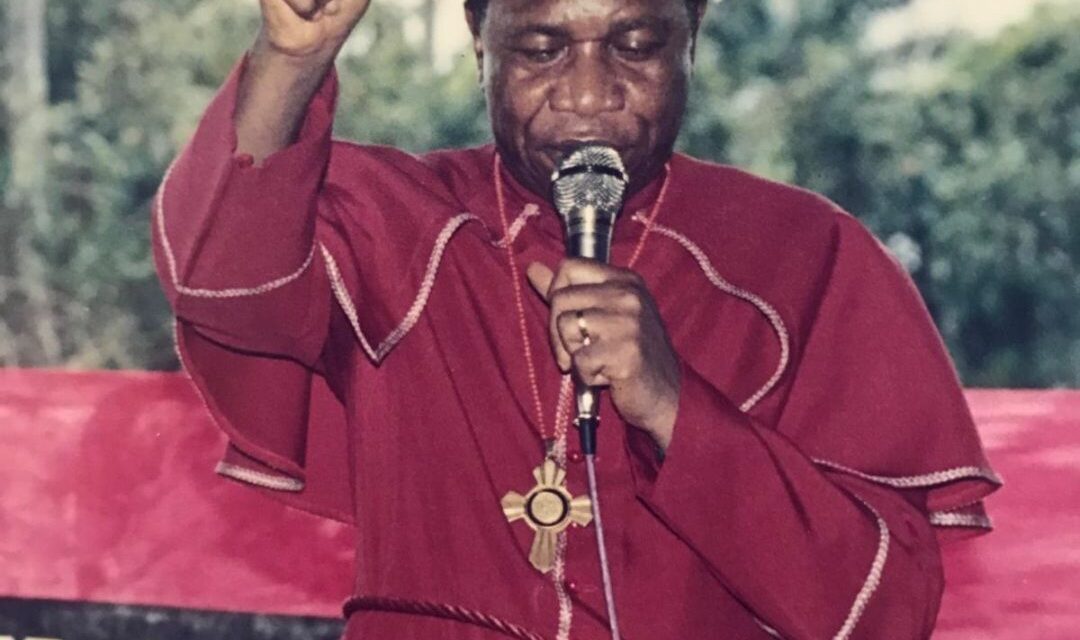

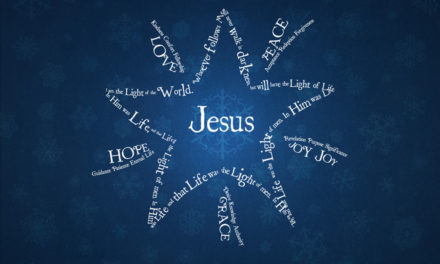
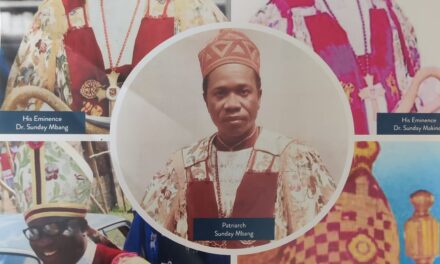

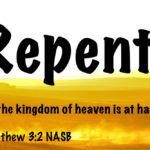
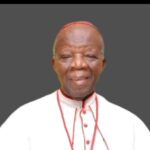
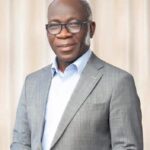
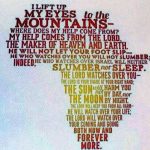
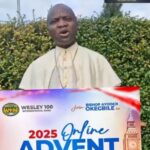
Recent Comments